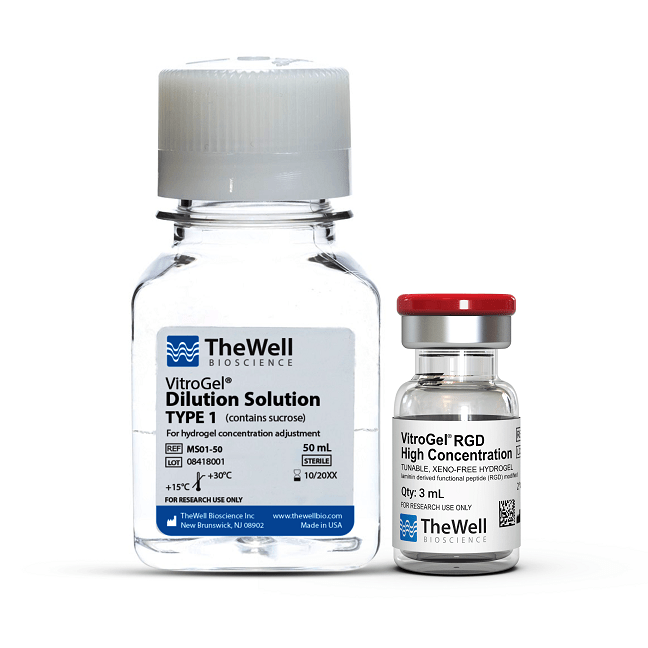Research Highlights
Utilizing Ultrasound Waves with Embedded Mesenchymal Stromal Cell in VitroGel® for Cartilage Regeneration

Institutions:
The BioRobotics Institute and Department of Excellence in Robotics & AI, Scuola Superiore Sant’Anna, Pisa, Italy; and several other European institutions
Team:
Ricotti, L., Cafarelli, A., Manferdini, C., et al. & Lisignoli, G.
Disease Model:
Bone Tissue Regeneration
Hydrogel:
VitroGel® RGD
In vitro assays with cells embedded in VitroGel RGD demonstrate that ultrasound waves can be used to trigger the piezoelectric affect “wirelessly” for the simulation of stem cell growth leading to cartilage regeneration.
In certain substances, pressure exerted through mechanical stress can generate electricity; examples of piezoelectric materials include crystals, some of which can be nanoparticles. Besides mechanical forces, such materials can be energized through ultrasound (US) waves. Importantly, US activation of piezoelectric materials has been shown to stimulate cell and tissue growth, with potential applications ranging from cancer treatment, bone regeneration, and wound healing. Other uses of piezoelectric materials in biomedicine are certainly possible and worth exploring.
In this paper, a collaborative effort between several European institutions, led by researchers at the BioRobotics Institute in Italy, pushed the power of the piezoelectric effect further, and asked whether cartilage regeneration could be achieved through the combination of US waves and these materials. Cartilage growth requires chondrogenesis, and thus the reanimation and directed differentiation of mesenchymal stromal cells. The authors of this work embedded two piezoelectric materials, barium titanate microparticles and graphene oxide, in hydrogel (VitroGel RGD) to test whether they could be a source of stem cell growth activation from afar, performed “wirelessly” with ultrasound. The authors used TheWell Biosciences’ VitroGel® RGD as the hydrogel because of its demonstrated ability to serve as a viable matrix for sustained cellular growth of adipose-derived stem cells (ASCs).
The authors tightly controlled the particle sizes and concentrations, as well as the intensities of the US waves that were applied. Using ASCs suspended in VitroGel® RGD treated with ultrasound waves at varying dosages, they indeed saw that local electrical current could be generated that resulted in chondrogenesis after the 10-day treatment program. Assays of cell growth-related gene expression levels, including those of the anabolic factor TIMP1 and the transcription factor SOX9, clearly indicated that these were significantly enhanced compared to no-ultrasound controls. The optimal treatment conditions proved to be 1 MHz and 250 mW/cm2 of US waves for 5 min once every 2 days over the 10 days. The authors also settled on 25 μg/mL of graphene oxide nanoflakes and 50 μg/mL of barium titanate microparticles as the most effective concentrations of the piezoelectric particles to embed in the hydrogel.
The authors results improved upon, and clarified previous studies that had shown how similar strategies could be used to enhance bone regeneration, but not with the localized, US- and hydrogel-dependency shown here. In the end, this paper demonstrates the great potential of combining injectable nanocomposites, with ultrasound waves to boost chondrogenesis and cartilage regeneration in a considerably more controllable procedure that applying natural mechanical stresses to the joint.


